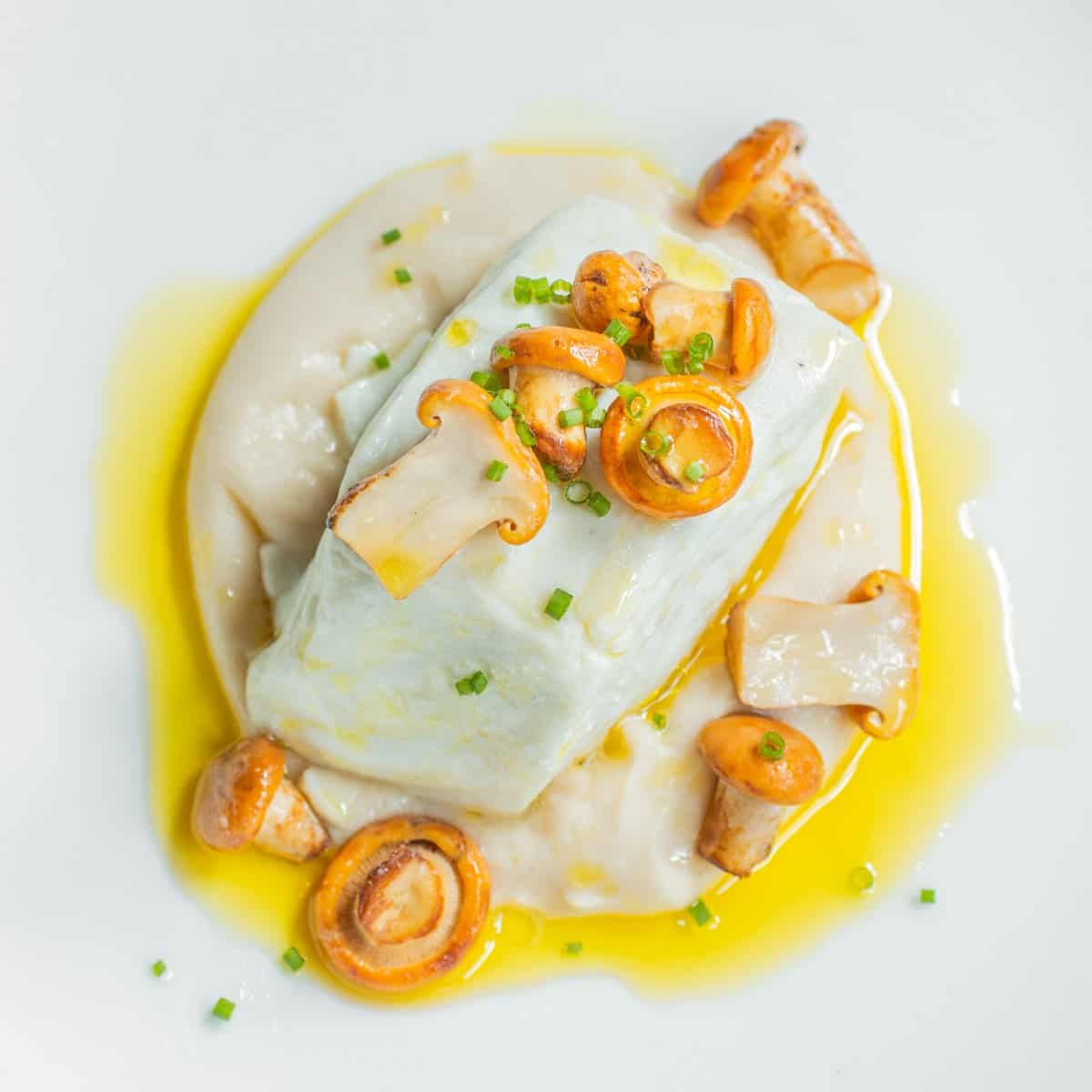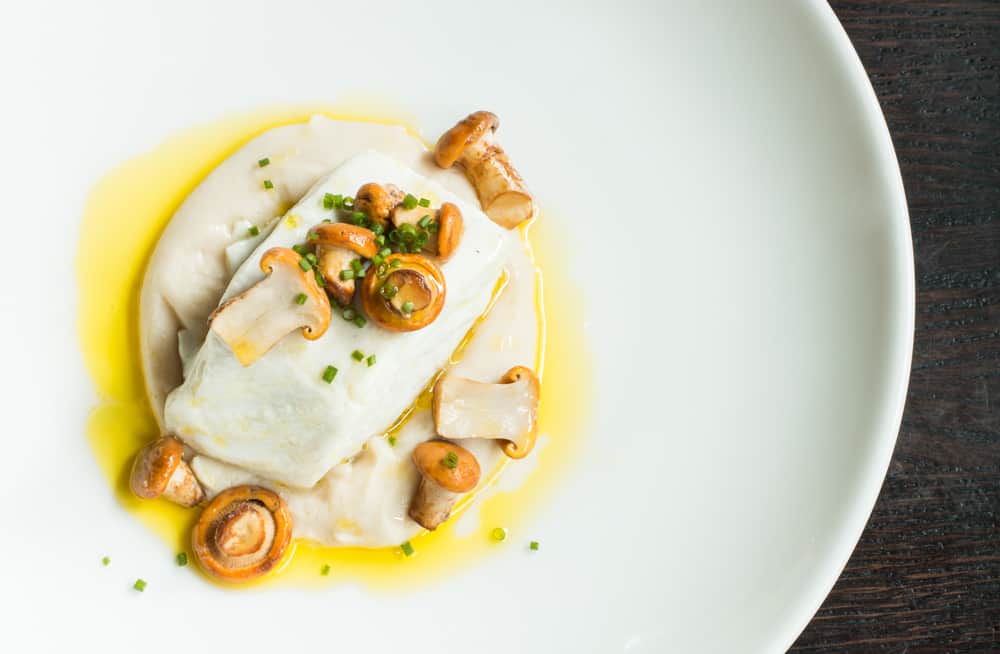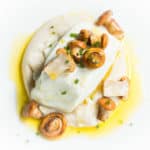Briased halibut with fresh chanterelle buttons and a puree of white beans is inspired by a traditional French dish of baccala my friend from France related to me.

Last Spring I met my friend Francois who's from France and now helps organize the logistics and sourcing of a well known restaurant in Duluth. He'd been following my work for a bit and made it down to the Slow Food Minnesota dinner I did last year at Piney Hill Farm.
Francois mentioned a traditional dish from where he hails from in France, the Saintogne region, on the western border of France with the Atlantic. Like most traditional recipes, there's only a couple ingredients: baccala/salt cod, white beans, and walnut oil.
We talked a while about how good the acorn oil from Sam Thayer would be with the fish and beans, and then moved onto the importance of tradition and simplicity in food before I went back to slicing up rabbit pate. I made sure to make a quick note about his salt cod/white bean/walnut oil combo though, and I'm glad I did.
Braised Halibut With Chanterelles, White Bean Puree, and Acorn Oil
Equipment
- 1 10 inch saute pan
Ingredients
- 4 four ounce pieces of halibut or another white flaky fish
- Kosher salt and fresh ground white pepper to taste
- Acorn oil to taste
- 4 ounces 1 stick unsalted butter
- ¼ cup dry white wine
- ¼ cup unsalted chicken stock fish stock, or water
- 1 teaspoon kosher salt plus more to taste
- 2 cups overcooked white beans plus ½ cup of the cooking liquid or chicken stock
- ¼ cup grapeseed or canola oil
- 4 ounces small golden chanterelle mushroooms, cleaned
- Fresh cut chives to garnish, optional
Instructions
- Warm the beans up with their liquid, then puree in a highspeed blender, adding the oil slowly at the end to help create a velvety smooth puree. If needed, add more bean cooking liquid or water to help create a smooth puree. Afterwords, pass the puree through a fine strainer, reserve and keep warm, preferably in a small saucepot with a lid to prevent the bean's starch from forming a crust on the top. The puree can be made in advance.
- To cook the halibut, bring the stock, butter, wine, and salt to a simmer, in a 2-3 qt sauce pot with high sides, whisking to make sure it doesn't break. Taste the liquid to make sure it is pleasantly salty, adjust as needed, then add the chanterelles and halibut and cook, covered, until the chanterelles are cooked through and the halibut is just done, about 5-10 minutes depending on the thickness of the halibut. I like to use a cake tester or an unfolded paper clip to tell when fish is done, when I can pierce the fish with no resistance, it's ready to go.
- To plate the dish, warm up the bean puree and whisk to loosen or break up any clumps. In the middle of pre-heated dinner bowls, place a ¼ cup of white bean puree, then a piece of halibut, the chanterelles, finally drizzle with a tablespoon of the acorn oil, sprinkle on the chives and serve immediately.



Dotty bacon
You surely know how to get juices flowing!